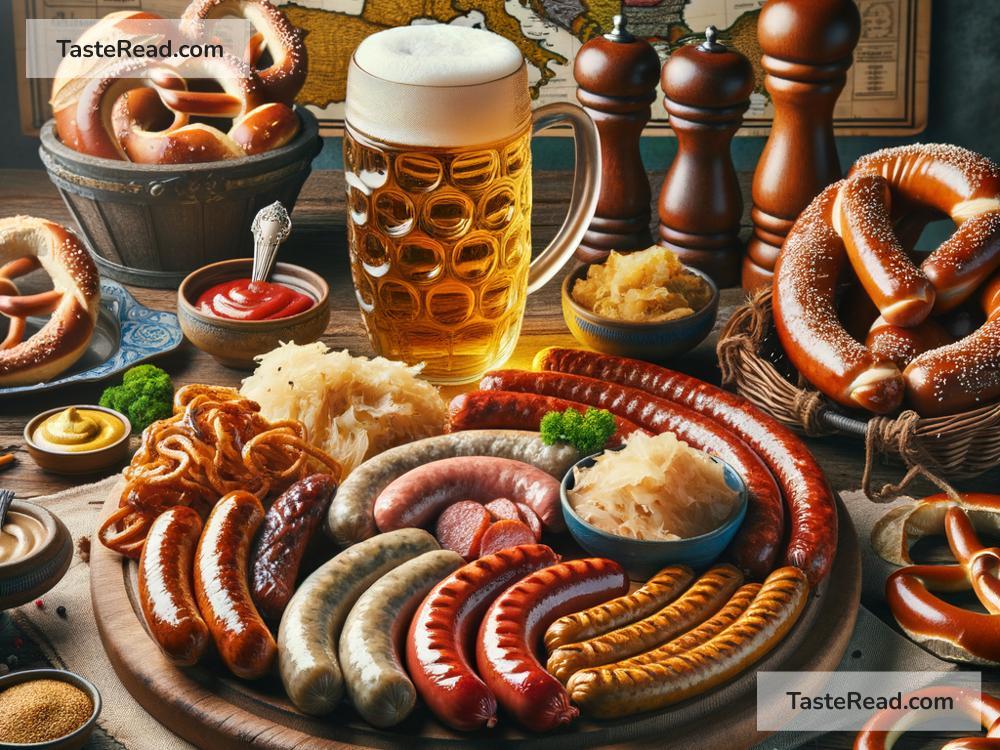The History of the German Sausage: A Delicious Tradition
Sausages are a beloved food around the world, and Germany is famous for its wide variety of them. From bratwurst to weisswurst to currywurst, German sausages have become symbols of the country’s culture and cuisine. But where did they come from, and why are they so important in Germany? Let’s take a journey through history to learn about the fascinating story behind the German sausage.
Where It All Began
The history of sausages goes back thousands of years. People started making sausages as a way to preserve meat before refrigerators were invented. By mixing ground meat with salt, spices, and other ingredients, they could keep it from spoiling for longer periods. Sausages were a way to make sure no part of an animal went to waste. This clever solution spread across many cultures, including the ancient Greeks, Romans, and Chinese.
In Germany, sausages became popular during the Middle Ages (about 500 to 1500 AD). At that time, small villages and towns started making their own sausages using local ingredients. Every region came up with its special recipe, which is why Germany has so many different types of sausages today. For the Germans, sausages weren’t just food—they were a tradition.
The Birth of Famous German Sausages
Over time, Germany developed hundreds of sausage varieties. Some of these sausages are now famous worldwide. Here are a few of the most popular:
Bratwurst
Bratwurst is one of Germany’s best-loved sausages. The name comes from the German words “braten” (to fry) and “wurst” (sausage). Most bratwursts are made from pork, beef, or veal, and they’re often seasoned with nutmeg, coriander, and ginger. Bratwurst dates back to around the 14th century and was first made in the region of Thuringia. Today, bratwurst is enjoyed grilled, fried, or simmered, often served with mustard or sauerkraut.
Weisswurst
Weisswurst is a traditional Bavarian sausage that literally means “white sausage.” It is made from veal and pork and seasoned with parsley, lemon, and cardamom. Weisswurst was invented in Munich in 1857, and it’s usually cooked in hot water rather than grilled or fried. In Bavaria, it’s common to eat weisswurst in the morning with pretzels and sweet mustard. Fun fact: Weisswurst is traditionally not eaten after noon because it was invented before refrigeration, and the sausages wouldn’t stay fresh for long.
Currywurst
Currywurst is a uniquely German sausage that was born after World War II. In 1949, a woman named Herta Heuwer from Berlin created a sauce by mixing ketchup and curry powder. She poured the sauce over grilled pork sausage, and currywurst was born. It quickly became a popular street food and remains one of Germany’s favorite snacks today. You can find currywurst food stands all over the country, especially in Berlin.
Sausages and German Culture
Sausages are not just food in Germany—they are part of the culture. They are served at family gatherings, festivals, and even on holidays. Oktoberfest, Germany’s famous beer festival, is one of the best places to enjoy sausages. At Oktoberfest in Munich, millions of visitors from around the world eat bratwurst, weisswurst, and other delicious sausages while sipping on traditional Bavarian beer.
Each region in Germany has its own sausage specialties, and people take pride in their local recipes. For example, Nürnberger bratwurst is a small sausage made in Nuremberg, while Thüringer bratwurst is famous in Thuringia. There’s even a bratwurst museum located in Thuringia to celebrate the history of the sausage!
Sausages are also deeply tied to Germany’s agriculture and economy. Sausage-making relies on local farms, butchers, and artisans. Generations of families have passed down their knowledge of sausage-making, keeping the tradition alive.
Modern German Sausages
Even though sausages have a long history, they continue to evolve in modern times. These days, you can find sausages made from different kinds of meat, including chicken and turkey, as well as vegetarian and vegan options. Many sausage makers have adapted their recipes to meet new tastes and dietary needs.
Additionally, German sausages have become popular far beyond Germany. You can find bratwurst at barbecues in America, currywurst food trucks in London, and weisswurst at Oktoberfest celebrations around the world. German sausages have truly become global.
Conclusion
The German sausage is more than just a food—it’s a part of history, culture, and tradition. From its humble beginnings in the Middle Ages to its global fame today, the sausage has always played an important role in Germany. Whether you’re enjoying bratwurst at a summer barbecue, biting into currywurst at a street food stand, or celebrating Oktoberfest with weisswurst and a pretzel, you’re tasting centuries of history in every bite.
So next time you eat a German sausage, take a moment to think about the journey it has taken through time to become a delicious part of your meal. Prost to Germany’s beloved sausages!


